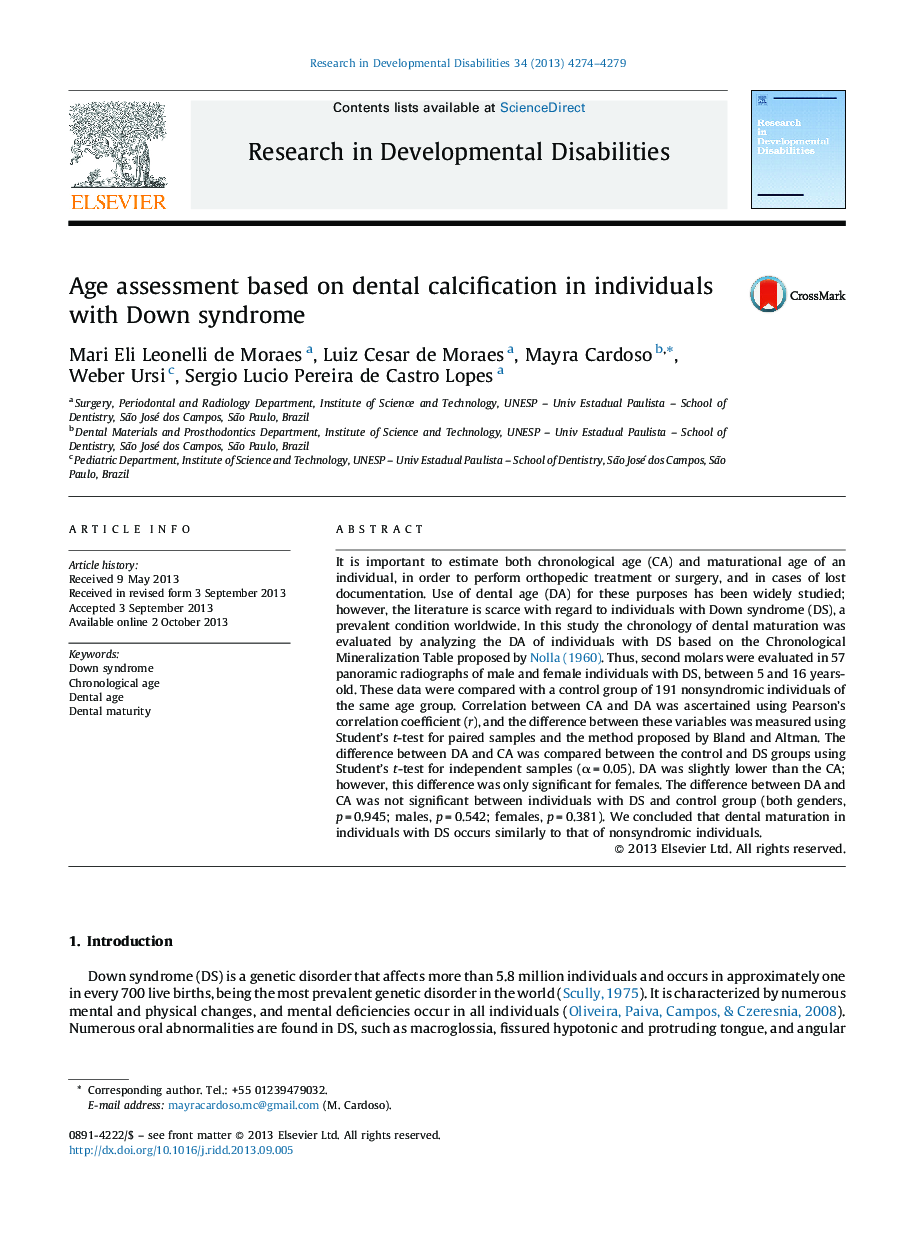| Article ID | Journal | Published Year | Pages | File Type |
|---|---|---|---|---|
| 10317704 | Research in Developmental Disabilities | 2013 | 6 Pages |
Abstract
It is important to estimate both chronological age (CA) and maturational age of an individual, in order to perform orthopedic treatment or surgery, and in cases of lost documentation. Use of dental age (DA) for these purposes has been widely studied; however, the literature is scarce with regard to individuals with Down syndrome (DS), a prevalent condition worldwide. In this study the chronology of dental maturation was evaluated by analyzing the DA of individuals with DS based on the Chronological Mineralization Table proposed by Nolla (1960). Thus, second molars were evaluated in 57 panoramic radiographs of male and female individuals with DS, between 5 and 16 years-old. These data were compared with a control group of 191 nonsyndromic individuals of the same age group. Correlation between CA and DA was ascertained using Pearson's correlation coefficient (r), and the difference between these variables was measured using Student's t-test for paired samples and the method proposed by Bland and Altman. The difference between DA and CA was compared between the control and DS groups using Student's t-test for independent samples (α = 0.05). DA was slightly lower than the CA; however, this difference was only significant for females. The difference between DA and CA was not significant between individuals with DS and control group (both genders, p = 0.945; males, p = 0.542; females, p = 0.381). We concluded that dental maturation in individuals with DS occurs similarly to that of nonsyndromic individuals.
Related Topics
Life Sciences
Neuroscience
Behavioral Neuroscience
Authors
Mari Eli Leonelli de Moraes, Luiz Cesar de Moraes, Mayra Cardoso, Weber Ursi, Sergio Lucio Pereira de Castro Lopes,
